Figurative Language
To truly understand English, you must have some knowledge of the most common types of figurative language.
Click Here for Step-by-Step Rules, Stories and Exercises to Practice All English Tenses
What does figurative mean?
Figurative means that words are used in a way that is different from the usual meaning. That way the description is more interesting or impressive. Figurative language creates a picture in your mind.| For
example: He is about to explode! We do not mean to say that the man will actually explode. We only want to say that he is extremely angry. So we use the verb "explode" in a figurative way. In other words, we use a word that usually describes something else. That way the description is more interesting. It creates a certain picture in the mind. |
 |
The opposite of figurative is literal
Literal means that you mean what you say exactly.| For
example: He is about to explode! Here we do mean to say that the man will actually explode. The man holds fireworks, and it looks dangerous enough to explode. So here we use the verb "explode" in a literal way. In other words, we use the usual meaning of the word. |
 |
Figurative comes from the word figure (also figure of speech).
- A figure of speech
is a word or phrase used in a different way from its usual
meaning in order to express a particular meaning.
In the about example, "explode" is a figure of speech.
Jump to:
To get a better understanding of figurative language, let's look at some common figurative sayings:
This is an example of figurative language.
This sentence does not mean that Sam is actually an animal.
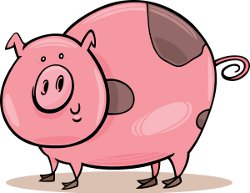
This sentence is a figure of speech meaning that Sam is very messy and does not have good manners.

"Beth let the cat out of the bag
about Lisa's surprise party."
This is another example of figurative language.
This sentence does not mean that Beth had a cat in a bag and let it out.
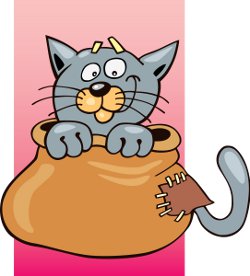
Native English speakers understand this sentence is figurative language meaning that Beth told Lisa the secret about the surprise party.
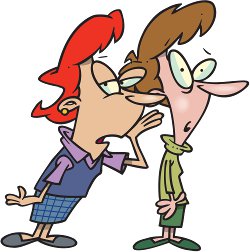
Figurative or Literal
To truly understand figurative language, you must first understand the terms "figurative" and "literal."Literal

She looks beautiful in her red dress!
This is a literal statement because the writer thinks the lady looks beautiful. The writer is simply stating that she looks beautiful.

He is a very big man.
This is a literal statement. The writer means that the man is big and strong.
These statements are literal and can sometimes be boring! To add interest, writers often write in a figurative way.
Figurative

This is a figurative statement, because a person can't really look exactly like money. The statement means that she is well dressed and looks beautiful.

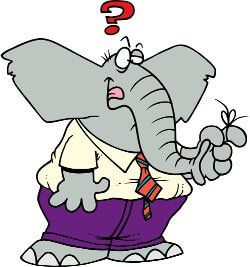
He is as big as an elephant!
This is also a figurative statement because a person cannot be as big as an elephant. The statement means he is very large. The writer compares the man to an elephant to help the reader visualize the large, strong man!
Figurative language
definition
Figurative language is a word or
phrase that cannot be taken literally. Writers use figurative language to describe things, people, or ideas.
Common reasons to use figurative language:
- for comparison
- for emphasis or stress
- to make something clear
- to say something in a new way
- to help the reader/listener form a picture in their mind
- to make a story or poem interesting

When reading, speaking, or writing in English, it is important to understand the meaning of some common figures of speech.
First, let's look at definitions and examples of the most common types of figurative language.
Types of figurative language
There are several common types of figurative language used in the English language.
Simile and metaphor
Similes and metaphors
are the two most common types of figurative language. They are both
used to compare two different things that do not usually go
together. The difference between simile and metaphor is that a simile uses the words "like" or "as" and a metaphor does not.
with like / as => simile
without like / as => metaphor
A) A simile is a comparison of two different things using the words "like" or "as."- She runs fast like
a cheetah.
(She runs very fast.)

- The children were as
quiet as
mice this morning.
(The children were very quiet.)
- The snow is a blanket over the house.
(The snow covers the house.)

- My little girl is an angel.
(My little girl is very nice and sweet.)
Idiom
An idiom is a commonly used
phrase that does not mean what it says. It cannot be taken
literally. There are many common idioms in the English language. Knowing the meanings of common idioms will help you understand American English better. For a list of some commonly used idioms and their meanings, click here: Idiom examples
- My car just kicked
the
bucket.
(kicked the bucket = broke down, stop working)
- Bob was feeling
blue after his girlfriend left him.
(feeling blue = feeling sad)

Click here for the full article on English idioms.
Hyperbole
A hyperbole is an obvious
exaggeration. Hyperboles are usually used to make a point.
Hyperboles cannot be taken literally.- I am so hungry I could eat
a horse!
(I am very hungry.)
- We waited in line forever!
(We waited in line for a long time.)
- The coffee was so hot, I was spitting
flames!
(The coffee was very hot.)
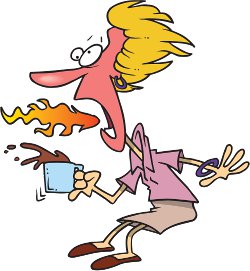
Click here for the full article on the hyperbole in English.
Personification
Personification is when a
human characteristic is given to something that is not human,
such as an object or an animal. Writers personify objects to provide
good descriptions.- My pen was
flying across
the page.
(I was writing very fast.)
- The leaves danced
in the wind.
(The wind was blowing the leaves around.)
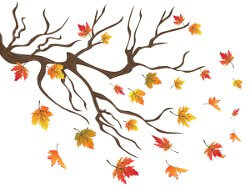
Alliteration
Alliteration is the
repetition of the initial sound in a series of words. Alliteration
is commonly found in poetry and rhymes.- She sells seashells by the seashore.
- Lazy lizards lounged by the lake.
Onomatopoeia
[on-uh-mat-uh-pee-uh]Onomatopoeias are words used to describe a sound.

- bang
- buzz
- moo
- click
- smack
Click here for the full article on the onomatopoeia in English.
Cliché
A cliché is a common
expression that has been overused. Clichés can be other types of
figurative language.- easy as pie
(very easy)
- let the cat out of the bag
(tell a secret)
- stick in the mud
(someone who does not want to try anything new)
- slept like a baby
(very well)
Click here for the full article on the cliché in English.
Pun
A pun is a play on
words. Puns are meant to be
clever and funny. Many jokes are actually puns.There are two ways to create a pun:
2. Use a word that has multiple meanings.
Examples:
- I took a job as a baker because I knead
dough.
(A baker can knead (mix) bread dough. People work because they need dough (money).)
- Why did the bee go to the doctor? Because she had hives.
(A bee lives in a hive. Hives is also an illness.)
- The golfer had two pairs of pants in case he got a hole
in one.
(A golfer can make the ball in the hole on the first try. Or the golfer can get a hole in one pair of pants.)

Click here for the full article on the pun in English.
Click here to learn about English Proverbs too.
Irony
Irony is when someone
says or does something, but means another thing or intends for
something else to happen. 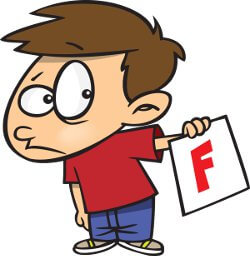
For example:
Nick just got an F on his
test. Maria looks at Nick and says, "Good job! You must have
studied hard."
Does Maria really mean "good job"? No! Maria is using verbal irony
to be sarcastic.
Click
here for the full article on irony in English: verbal irony,
dramatic irony, and situational irony.
Paradoxes, Oxymorons, and Contradictory Statements
See also our lessons on Paradoxes, Oxymorons, and Contradictory and Statements and How Euphemism Is Used: Euphemism Meaning and Examples.
This was just an overview of each type of figurative language. To
learn more about a specific type, click the links to the full
articles.
Now that you have learned about the types of figurative
language, it is time to review and practice with this figurative
language quiz!
This was an overview of figurative language. Now that you
understand it, it is time to practice! Get
our ESL Books.
Get Updates, Special Offers, and English Resources
Download your FREE GIFT (the first two chapters of
English Short Stories Book and Workbook)
as soon as you join!

By submitting your email, you consent to receiving updates and newsletters from us and to the sharing of your personal data with third parties for the purposes of sending you communications. We will not spam you. You can unsubscribe at any time. For more information, please see our privacy policy.
Return from Figurative Language to Learn to Write in English








